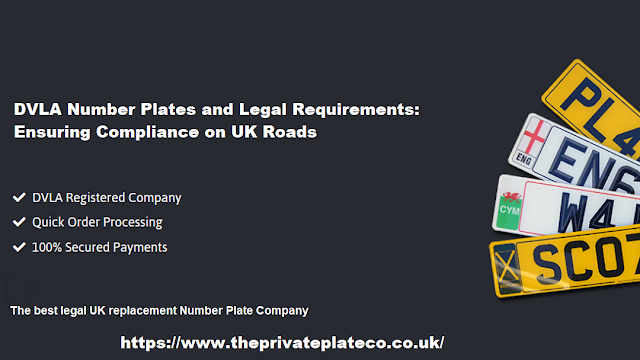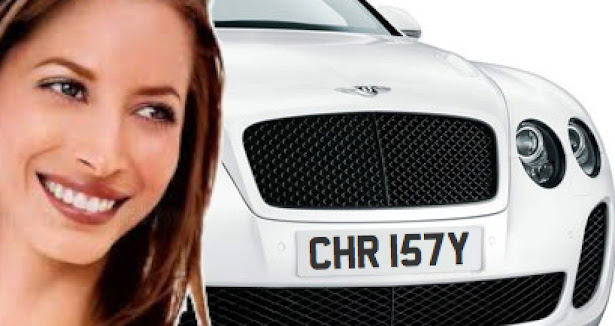DVLA Number Plates and Legal Requirements: Ensuring Compliance on UK Roads
DVLA number plates, also known as vehicle registration plates, are a mandated requirement for all vehicles on UK roads. The purpose of these plates is to enable easy identification of the vehicle and its ownership. The Driver and Vehicle Licensing Agency (DVLA) sets out strict guidelines to ensure that all number plates meet certain standards, including their size, style, and content. In this article, we’ll take a closer look at the legal requirements for DVLA number plates.
The Basics of DVLA Number Plates
Firstly, it is important to understand the basic format of DVLA number plates. They are made up of two parts: the local memory tag, which consists of two letters that identify the region where the car was registered, and the vehicle identification tag. The second component is the vehicle’s unique random selection of letters and digits. To comply with legal regulations, the letters and digits are ordered in a specified format and must be displayed in a specific manner.
Read more- Private plates
DVLA Number Plates Material
One of the most important legislative requirements for DVLA number plates is that they are composed of reflective material. This makes them easily visible in low-light circumstances, such as at night or in bad weather. The material must also be long-lasting and resistant to fading or damage in order to ensure that the plates remain legible and comply with legal requirements.
DVLA Number Plate Size
Another crucial regulatory requirement for DVLA number plates is that they be a specific size and design. The plates must be 520mm x 111mm in size and font, and the characters must be a specified size and font. This guarantees that the plates are easily legible from a distance and that they meet legal vehicle identification standards.
DVLA Number Plate Characters
The characters on a DVLA number plate must also be arranged in a specific way, with specific spacing between them. The characters on a DVLA number plate must be a specific height and width, with the correct spacing between them. The letters must be 79mm high and 50mm wide, while the numbers must be 79mm high and 44mm wide. The plate must have a margin of 11mm around the characters, and the spacing between the groups of characters must be 33mm. The spacing between the letters and numbers within a group must be 11mm. These requirements ensure that the plate is easily readable and meets legal requirements.
DVLA Number Plate Fonts
The font used on DVLA plates must be a specific typeface, known as Charles Wright 2001. This font is designed to be easy to read and is used on all new number plates in the UK. The font size used on number plates must be 79mm for the letters and 50mm for the numbers.
DVLA Number Plate Display
Another important legal requirement for DVLA number plates is that they must be displayed in a certain way on the vehicle. The front plate must be displayed on the front of the vehicle, and the rear plate must be displayed on the rear of the vehicle. The plates must be securely fastened to the vehicle using the correct screws, and must not be obscured by any other objects or accessories. Failure to comply with these legal requirements can result in fines or legal action.
Also Vist Here -personalised plates
It is also important to note that DVLA number plates must not include any offensive or inappropriate words or characters. The DVLA has the option to reject any enlistment that it considers hostile or improper, and may renounce the enrolment of any plate that is subsequently considered to be disregarding legitimate necessities.
Last but not least, it is important to note that selling personalized number plates is subject to specific legal requirements. Any personalized number plate that is sold in the United Kingdom needs to be registered with the DVLA and follow their specific rules. There may be penalties or legal action for breaking these rules.
If you fail to meet the legal requirements for DVLA number plates, you could face penalties from the DVLA or the police. This could result in monetary penalties, points on your driving record, or even the loss of your vehicle. To avoid any unnecessary fines or legal issues, it is essential to check that your number plates meet all legal requirements.
In conclusion, strict legal requirements govern the display and use of DVLA number plates, which are an essential component of UK vehicle registration. These requirements include the utilization of intelligent material, explicit size and shape prerequisites, and the right separating and planning of characters. It is critical to ensure that your vehicle’s number plate is displayed correctly and in accordance with the law because violating these legal requirements could result in penalties or legal action.
Also Read Here -A Complete Guide to Personalizing Your Vehicle in the UK



Comments
Post a Comment